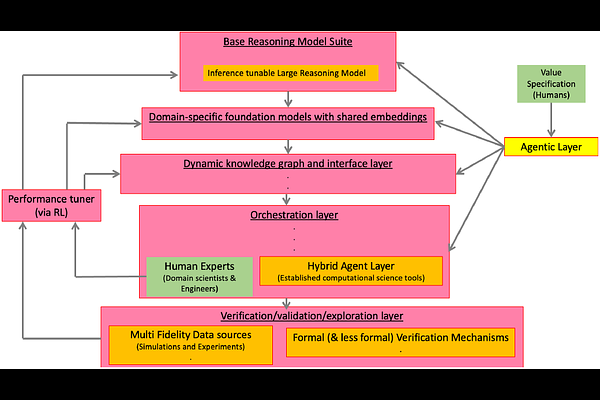Active Inference AI Systems for Scientific Discovery

Active Inference AI Systems for Scientific Discovery
Karthik Duraisamy
AbstractThe rapid evolution of artificial intelligence has led to expectations of transformative scientific discovery, yet current systems remain fundamentally limited by their operational architectures, brittle reasoning mechanisms, and their separation from experimental reality. Building on earlier work, we contend that progress in AI-driven science now depends on closing three fundamental gaps -- the abstraction gap, the reasoning gap, and the reality gap -- rather than on model size/data/test time compute. Scientific reasoning demands internal representations that support simulation of actions and response, causal structures that distinguish correlation from mechanism, and continuous calibration. We define active inference AI systems for scientific discovery as those that (i) maintain long-lived research memories grounded in causal self-supervised foundation models, (ii) symbolic or neuro-symbolic planners equipped with Bayesian guardrails, (iii) grow persistent knowledge graphs where thinking generates novel conceptual nodes, reasoning establishes causal edges, and real-world interaction prunes false connections while strengthening verified pathways, and (iv) refine their internal representations through closed-loop interaction with both high-fidelity simulators and automated laboratories - an operational loop where mental simulation guides action and empirical surprise reshapes understanding. In essence, we outline an architecture where discovery arises from the interplay between internal models that enable counterfactual reasoning and external validation that grounds hypotheses in reality. It is also argued that the inherent ambiguity in feedback from simulations and experiments, and underlying uncertainties makes human judgment indispensable, not as a temporary scaffold but as a permanent architectural component.